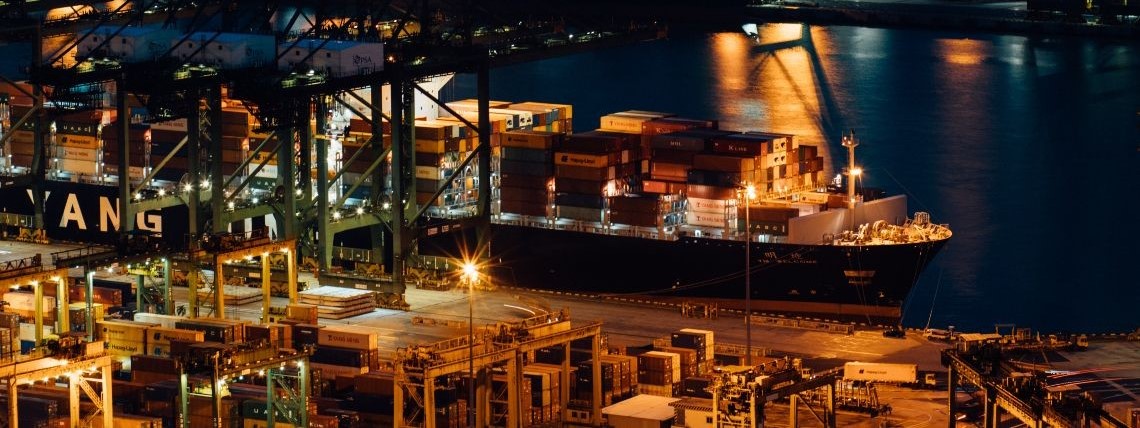
Glossary of Shipping Terms - Your Guide to Clear Communication
Welcome to the Silk Container Lines Ltd Glossary, a comprehensive guide to the terminology used in the shipping and logistics industry. Whether you're a seasoned professional or new to the world of global trade, this glossary is designed to enhance your understanding of key terms and facilitate clear communication in the complex landscape of international shipping.
A - B
- Bill of Lading (B/L): A legal document issued by a carrier to the shipper, acknowledging the receipt of goods for shipment and specifying the terms of transportation.
- Booking: The process of reserving space on a vessel or other mode of transportation for the carriage of goods.
C - D
- Container: A standardized, reusable metal box used for the transportation of goods. Containers come in various sizes and types, including standard dry containers, refrigerated containers (reefers), and specialized containers for specific cargo types.
- Customs Clearance: The process of complying with customs regulations to allow the import or export of goods, including the submission of required documentation and payment of duties and taxes.


E - F
- Freight Forwarder: An intermediary or agent that organizes the transportation of goods on behalf of a shipper. Freight forwarders handle logistics, documentation, and customs clearance.
- Incoterms (International Commercial Terms): A set of standardized trade terms published by the International Chamber of Commerce (ICC) that define the responsibilities of sellers and buyers in international trade transactions.
G - H
- Goods in Transit: Goods being transported from the seller to the buyer but not yet received at the destination.
- High Cube Container: A container with extra height, typically 9.6 feet, allowing for the transportation of taller cargo.
I - J
- Inland Transportation: The movement of goods within a country, typically by road, rail, or inland waterways, connecting ports to final destinations.
- Joint Venture: A business arrangement where two or more parties collaborate to undertake a specific project or business activity.
K - L
- LCL (Less than Container Load): A shipping arrangement for goods that do not fill a standard container. Multiple shipments from different shippers are consolidated into a single container.
- Letter of Credit (L/C): A financial document issued by a bank on behalf of a buyer, providing payment to a seller once specified conditions are met.


M - N
- Manifest: A document listing the cargo on board a vessel, flight, or other mode of transportation. It includes details such as quantity, weight, and description of each shipment.
- NVOCC (Non-Vessel Operating Common Carrier): A company that consolidates and coordinates shipments from multiple shippers to achieve cost savings. NVOCCs do not own vessels but act as carriers.
O - P
- Origin: The point where the journey of goods begins, usually the place of manufacture or shipment.
- Port of Discharge: The port where a vessel unloads its cargo, and the goods are discharged.
Q - R
- Quarantine: A period during which goods are isolated to prevent the spread of disease or contamination.
- Reefer: A refrigerated container used for transporting temperature-sensitive cargo, such as perishable goods.
S - T
- Shipment Tracking: The process of monitoring and recording the movement of goods in transit, providing real-time updates on their status and location.
- TEU (Twenty-foot Equivalent Unit): A standard unit of measurement in the shipping industry, representing the cargo-carrying capacity of a standard twenty-foot container.


U - V
- Ullage: The empty space between the top of a liquid cargo and the top of its container, often expressed as a percentage.
- Vessel: A ship or large boat used for transporting goods across seas and oceans.
W - X - Y - Z
- Warehouse:A facility used for the storage of goods before, during, or after transportation.
- X-Ray Inspection: The use of X-ray technology to inspect the contents of containers and packages for security and customs purposes.
- Yard: An area used for the storage, staging, and handling of containers and cargo within a port or transportation terminal.
- Zone D (Dangerous Zone): A designated area within a vessel where dangerous goods are stowed.
This glossary is intended as a reference guide, providing clarity on the terminology used in the shipping and logistics industry. If you have any further questions or require additional information, feel free to contact Silk Container Lines Ltd.
